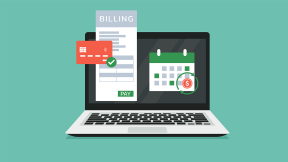How to reach your financial goals with Chase Credit Journey’s score improvement feature powered by Experian™.

Planning for your financial future—such as preparing for a large purchase or saving for retirement—can be exciting but also stressful. Doing so comes with questions, takes up time and can be a complex process, which can leave you feeling overwhelmed and confused. At the same time, you know you want to set yourself up for success. So what should you do?
To help break down the barriers to understanding your financial goals, you can use Chase Credit Journey's credit score planning feature provided by Experian™, which helps you to:
- Set short-term financial goals
- Set long-term financial goals
- Reach and achieve your financial goals
Let's dive into each of these in more detail.
How to set financial goals
Remember that piggy bank you had when you were a child? Planning to save up for your first bicycle seemed pretty simple back then, right? But as we get older and our purchases grow in size, we may need new tools and strategies to help support us.
To take your initial step towards setting a financial goal, begin by enrolling in Credit Journey®. When you enroll, you'll receive a free VantageScore® 3.0 credit score provided by Experian™. This will help you to understand what your credit score is, which is essential to learning how to plan out your financial goals.
Once you've enrolled, take the following steps below.
Step 1: Set a goal
In Credit Journey's platform, choose the "Insights" tab, then click on the "Score Planner" tile. To set a goal, first tell us about your financial aspirations. What are you planning for? To purchase a home or car? You'll be prompted with options to choose from to help you navigate and determine the right plan for you.
Step 2: Choose a timeframe
Next, choose your timeframe for when you want to reach your new goal. We'll use your Experian credit report to set a score goal based off whether you're looking to achieve it within 3, 6, 9 or 12 months. Note that if you can't meet your goal, your score will not be impacted and your lender will not see this information.
Step 3: Get your personalized plan
After you provide the information needed to help set up your goal, you'll receive a personalized action plan provided by Experian to help you start taking action today to improve your score. At each step, you'll receive insights and details about what you can do today with your current accounts to help improve your score and stay on track.
Part of using the credit planning feature means you get to decide the timeframe for building certain goals. Let's review short-term and long-term financial goals you may have in more detail and how this feature can help.
Short-term financial goals
The shortest timeframe you can select when you set a score goal is 3 months, but you can always see improvement happening sooner if you're consistent and follow the action plan provided by Experian.
When it comes to setting a short-term financial goal, begin by understanding what it is you want to accomplish. Do you need to make a large purchase, or pay off medical bills? Understanding your priorities and concerns is essential for creating an achievable and realistic score goal plan. If you need to improve your credit score by a certain time, this feature will help detail steps you can take today to improve your credit score in just a few months and give you an idea what improvement you might see in that timeframe.
Long-term financial goals
The longest timeframe you can select when creating a score goal is 12 months. You may be setting up long-term goals for a variety of reasons, such as making a large purchase, planning for an overseas trip or participating in higher education. All of these may require you to have strong enough credit so you can get the best rates on your mortgages, loans and more. You may also be considering improving your financial outlook in general. Let's say you want to improve your credit score and pay off debts to help alleviate some of the financial burden you're carrying. Using the credit planning feature within Credit Journey can help break it down into easily manageable steps.
How credit planning can help achieve your goals
Creating a score goal is an actionable step you can take today to help meet some of your financial goals. The credit planning feature is based on action plans—detailed guidelines that present you with a step-by-step plan for success. But like any other plan in life, it needs to be followed for it to work. Fortunately, this plan is personalized and tailored to your finances and your goals.
Not only do you get a personalized plan to help you achieve your goals, you can review your progress on the line graph included in the feature—this is a visual representation of your score over time. Each time your score updates, this tracker will display the value, how it compares to your score goal and how it fluctuates overtime.
Remember, changes to your score are based on your current financial picture. Any major changes to your financial environment—such as taking on additional debt—can impact the trajectory of your score goal, whether that's over the short term or long term.
Bottom line
Whether you're looking to plan out your financial future in the short term or hoping to improve it down the line, Credit Journey's personalized action plan will help you break down your goals and give you step-by-step guidance for how to achieve them. Financial planning doesn't have to be as scary as you may think—it can be an empowering journey that leads you to a happier, healthier life.



